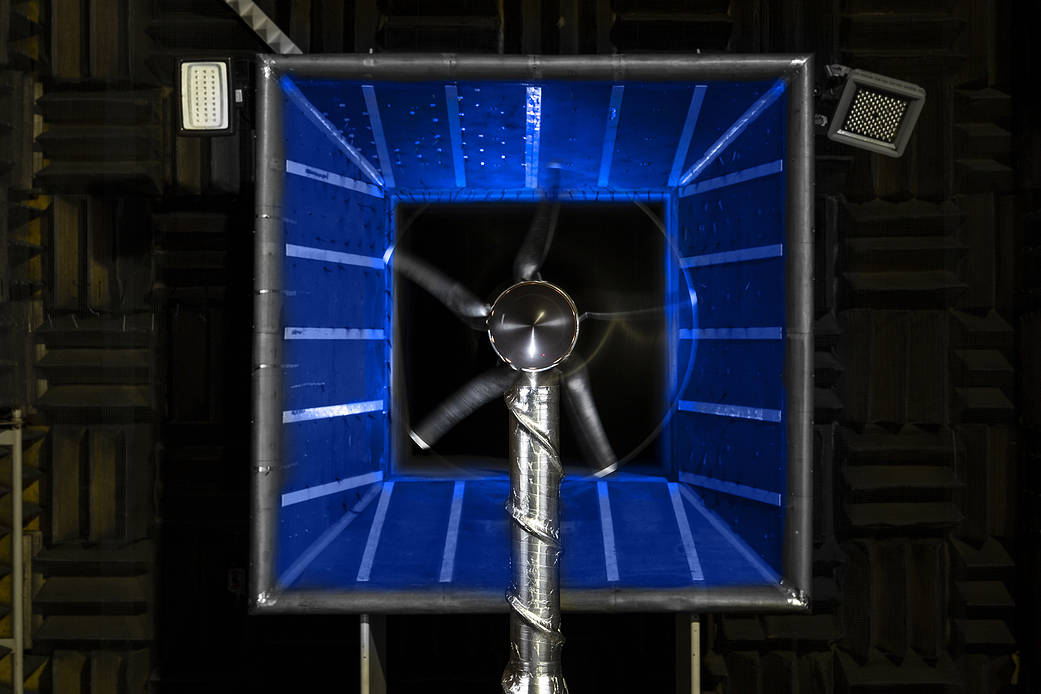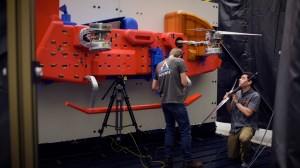Innovative propeller technology that will help power NASA’s first all-electric X-plane, the X-57 Maxwell, recently completed testing in the Low-Speed Aeroacoustic Wind Tunnel (LSAWT) at NASA’s Langley Research Center in Hampton, Virginia.
These tests were performed to gather crucial performance data for flight conditions using full-scale high-lift propeller assembly prototypes provided by Empirical Systems Aerospace of San Luis Obispo, California.
The X-57 will use 12 of these propellers on the wing of its final configuration, called Mod IV. The propellers deploy during low-speed flight, such as take-off and landing, then passively fold back when not in use to then avoid additional drag at higher cruising speeds.
“The X-57 project is using these tests to determine the as-built performance versus our models, so that we have high confidence in the performance of these propellers when we get to flight,” said Nick Borer, Advanced Concepts Group Lead for NASA Langley’s Aeronautics Systems Analysis Branch. “This data is critical to an upcoming design review for the X-57 to proceed with building the flight hardware. We also gathered operational best practices, such as recommended inspection intervals and motor control rates that we will pass along to the X-57 project team.”
These wind tunnel tests took part over two weeks, exposing the hardware to wind speeds from zero to over 90 knots, with 14 hours of powered propeller operation.
The test was an intersection of two NASA Aeronautics projects and a nascent trial for new wind tunnel hardware. The Flight Demonstrations and Capabilities project, which is the parent project of the X-57, served as the customer for the test, and the Revolutionary Vertical Lift Project (RVLT) provided the unique drive system used to test the propellers.
“RVLT commissioned the construction of a new Propeller Test Stand from a local small business in Hampton,” said Borer. “In the future the test stand will be used to study and characterize the noise of various Advanced Air Mobility concepts in the LSAWT.”
NASA’s primary goal for X-57 is to help develop certification standards for emerging electric aircraft markets.
The challenge of the X-57 seeks to reach the goal of zero carbon emissions in flight, a 500 percent increase in high-speed cruise efficiency, and flight that is quieter for communities on the ground.


































